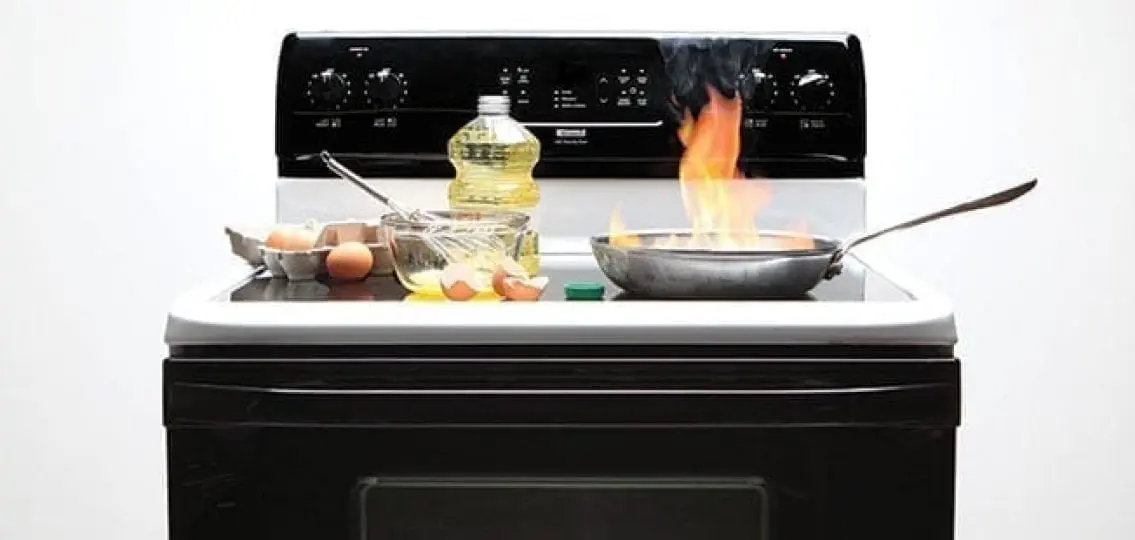If you’re cooking and suddenly have a fire on your hands, do you know what to do? Putting out a fire in the kitchen depends first on knowing what kind of fire it is. Before you live on your own, know a few kitchen fire safety basics.
Teaching Kitchen Fire Safety
How To Put Out Grease Fires
A grease fire can’t be extinguished with water. Grease is lighter than water; it will float to the top and continue burning on the water’s surface. Instead, the way to handle a grease fire is to smother it with a pan lid and wait for it to die out. Or grab a box of baking soda and pour it over the fire to kill the flames. If the fire is too big for either of those options, then use a kitchen fire extinguisher. (You have one, right?)
How To Put Out Oven Fires
If a blaze suddenly sparks up inside your oven, shut the door tightly. Do not open the oven door. Turn the oven off and back away. If you open the door, you risk burning your face or setting your hair or clothing on fire. Fire needs oxygen to thrive, and you’ll only be fanning the flames—literally—by opening the door. Let the fire die down, stay in the room, and keep an eye on things through the oven window. Once the oven has cooled completely, then you can clean it up.
How To Put Out Microwave Fires
Turn off the microwave immediately, if it’s safe to do so. (If the fire has not affected the touchpad, it should be safe to touch.) This will stop the fan so it won’t feed oxygen to the flames. Then wait until the fire suffocates. Do NOT open the door while the fire is active. To minimize risk of fire, never attempt to heat articles that are not approved for use in microwaves. Do not use metal, metal-edged bowls, foil, or even twist ties. The metal can cause sparks or flashes, which can lead to a fire.
How To Put Out Electrical Fires
Like grease fires, electrical fires cannot be eliminated with water. Instead, use a kitchen fire extinguisher. After you’ve put out an electrical fire, follow up with the fire department to ensure your kitchen is safe. To prevent electrical fires in the first place, make sure your outlets are not overloaded with too many appliances.




